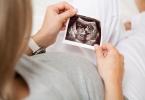Sales market: Russia.
The BMW 5-Series in the back of the E34 was replaced by the E39 in 1995. The new "five" has retained the easily recognizable branded grille in a new style and classic round headlights, but now covered with a single transparent plastic cover. The bodywork has become even more aesthetically pleasing, and new streamlined shapes have reduced the aerodynamic drag coefficient to 0.27, the best value in its class until 1997. For corrosion protection, 77 percent of the sheet metal panels are galvanized. The content of light alloys has increased, and the suspension of the E39 is almost entirely made of aluminum. "Thruster" rear suspension improved handling. For the E39 of the 1995-2000 production phase, in-line gasoline and diesel "sixes" were offered, as well as V8 gasoline units. The power range is in the range from 143 to 286 hp. At the end of 1999, the first "five" of domestic assembly appeared on the Russian market. The Kaliningrad plant produced the 523i and 528i sedan models. They differed from German cars in the package "for bad roads" and the absence of a catalyst.
The interior of the BMW E39 has become even more luxurious. Only premium quality materials are used in the decoration, including leather, aluminum or wood inserts. The center console, as before, is focused on the driver. The basic equipment includes electric mirrors, power windows and door locks, air conditioning. Options include leather upholstery or combination upholstery, climate control, a multifunction steering wheel and even a heated steering wheel. There are power seats, sports seats or luxury seats with massage. In the maximum configuration, a large monitor of the on-board infotainment system was located on the central panel.
The BMW E39 engine range from 1995-2000 is very diverse in terms of modification. At the beginning of production, gasoline 6-cylinder 24-valve in-line engines M52 were installed: 520i (2.0, 150 hp), 523i (2.5, 170 hp), 528i (2.8, 193 hp). A 525tds diesel version (2.5, 143 hp) was also offered. Later, new V8 M62 petrol engines appeared: 535i (3.5, 235 hp), 540i (4.4, 286 hp). Then the line was replenished with a more modern M57 diesel engine (2.9, 184 hp), which was installed on the 530d model. And the technically updated (TU) petrol sixes were equipped with a VANOS dual phase control system for an additional increase in torque at low revs. V8 engines received a VANOS system for intake valves and two-stage catalytic converters to comply with the 2005 Euro 4 standard. This generation also saw the launch of a new M5 sports sedan model with a 400 hp 5.0-litre V8, considered the most powerful production BMW engine at the time.
The front suspension of the BMW E39 is independent, on double wishbones with a subframe connected to the body through rubber mounts. The rear suspension is independent four-link, with floating silent blocks. Together with the main gear, it is also assembled on a subframe elastically connected to the body. The E39's suspension design makes extensive use of aluminum, from which the control arms, tie rods, front and rear suspension subframes, suspension strut mounts, and shock absorber outer tubes are made. All this reduced unsprung weight by 36% and increased comfort. Additionally, for the E39, an electronic damping control system (EDC) was offered, as well as rear axle pneumatic shock absorbers with ride height control, which is considered a rarity for a sedan (more often the E39 Touring station wagon was equipped with a rear air suspension). Interestingly, the E39 steering includes two options: base models use rack and pinion (a first for the 5 Series), while V8 models retain the traditional ball-and-pinion design of previous generations. BMW E39 sedan body dimensions: length 4775 mm, width 1800 mm, height 1435 mm. Wheelbase 2830 mm. The minimum turning radius is 5.65 m. The ground clearance for the "Europeans" was 120 mm, but for the Russian market it was increased to 155 mm. Trunk volume 460 liters.
With the advent of the E39 series, the “five” has become even safer. The car has significantly increased torsional rigidity of the body. Standard equipment includes two front airbags, five head restraints and five three-point seat belts, anti-lock braking system (ABS) and stability control with ASC+T traction control. Since October 1996, side airbags appeared in the “base”. In September 1997, another improvement was added: head airbags were added, rear side airbags were offered for an extra charge, and the DSC dynamic stability control system appeared in V8 modifications (an option for the 528i). Since 1998 - an auxiliary braking system and tire pressure monitoring. In 1998, the "five" E39 received four EuroNCAP stars.
The advantages of the BMW E39 were: spectacular design, high-performance engines, excellent handling, previously inaccessible level of comfort (the developers of the car largely relied on the functionality of the 7th E38 series). The car is also distinguished by high build quality. There are also disadvantages - expensive maintenance, capricious electronics, low ground clearance, requiring increased attention to the suspension. Also, one of the disadvantages of this generation is the lack of all-wheel drive modifications that the E34 had (this defect was corrected only in the next generation of the E60).
Read completely
BMW S62 engine
S62B50 engine data
| Production | Dingolfing Plant |
| Engine brand | S62 |
| Release years | 1998-2003 |
| Block material | aluminum |
| Supply system | injector |
| Type | V-shaped |
| Number of cylinders | 8 |
| Valves per cylinder | 4 |
| Piston stroke, mm | 89 |
| Cylinder diameter, mm | 94 |
| Compression ratio | 11.0 |
| Engine volume, cc | 4941 |
| Engine power, hp / rpm | 400/6600 |
| Torque, Nm/rpm | 500/3800 |
| Fuel | 95 |
| Environmental regulations | Euro 2 |
| Engine weight, kg | ~158 |
| Fuel consumption, l/100 km (for E39 M5) - town - track - mixed. |
21.1 9.8 13.9 |
| Oil consumption, g/1000 km | up to 1500 |
| Engine oil | 10W-60 |
| How much oil is in the engine, l | 6.5 |
| Oil change is carried out, km | 7000-10000 |
| Operating temperature of the engine, hail. | ~100 |
| Engine resource, thousand km - according to the plant - on practice |
— 250+ |
| Tuning, HP — potential - no loss of resource |
600+ n.a. |
| The engine was installed | BMW M5 E39 BMW Z8 |
| Gearbox, 6MKPP | Getrag Type-D |
| Gear ratios, 6MKPP | 1 — 4.23
2 — 2.53 3 — 1.67 4 — 1.23 5 — 1.00 6 — 0.83 |
Reliability, problems and repair of the BMW M5 E39 S62 engine
The new BMW M5 E39, released in 1998 and replacing the M5 E34, has increased in size on all fronts and, to achieve high dynamic performance, the inline six was not enough, especially since the BMW S38 is seriously outdated. It was decided to use an engine with a V8 configuration and the aluminum M62B44 was taken as the basis for the next M-engine, from the existing BMW 540i E39.
The cylinder block was modified: the cylinder diameter was increased from 92 mm to 94 mm, a forged crankshaft was installed with a piston stroke of 89 mm (it was 82.7 mm), the connecting rod length was 141.5 mm, the pistons were modified, for a compression ratio of 11.
Above, on three-layer cylinder head gaskets, are the S62B50 cylinder heads themselves (this is what the M5 E39 engine is called). They are a modified version of the M62B44. Relative to the M62, the S62 has enlarged intake and exhaust ports, uses new valve springs and lightweight valves: inlet 35 mm, exhaust 30.5 mm. The camshafts on the M5 E39 have the following characteristics: phase 252/248, lift 10.3 / 10.2 mm. The variable valve timing system VANOS has been replaced by Double-VANOS (intake and exhaust camshafts). The M5 E39 uses hydraulic lifters and the valves do not require adjustment. Unlike the M62, the S62 uses a double-row timing chain.
The entire intake system has been redesigned: a large intake reservoir has been used, and 8 throttles have been used, one throttle for each cylinder. The diameter of each is 48 mm. Nozzle performance - 257 cc. The exhaust system is modified, with two catalysts. Brains - Siemens MS S52.
All this made it possible to make almost 5 liters from a conventional 4.4 liter engine and increase power from 286 hp. up to 400 hp at 6600 rpm.
The BMW S62 engine was installed on the M5 E39 and on the rare Z8 roadster.
The release of the motor was discontinued in 2003, along with the end of production of the M5 in the back of the E39, but after 2 years the new M5 E60 appeared, with an even more powerful S85B50.
Problems and disadvantages of BMW S62 engines
The main diseases of the BMW M5 E39 engines are the same as those of the M62B44. The differences lie in the smaller resource of the S62B50, due to the maximum cylinder diameter (there is a burnout of the cylinder head gasket) and the active operation of the car. In addition, the M5 E39 consumes oil in decent quantities, do not save on it and change it more often than expected (7000-10000 km is optimal). Also keep an eye on the condition of the cooling system and pour in high-quality 98 gasoline, then your S62 will drive as smoothly as possible for an old car.
BMW M5 E39 engine tuning
S62 Atmo
You can increase the power of the BMW M5 E39 without using supercharging by buying a sports exhaust system without catalysts, with 4-2-1 manifolds, cold intake and making chip tuning. These small conversions will allow you to remove about 430 hp. You can improve the result with more efficient camshafts (272/272, lift 11.3/11.3), cylinder head porting with channel boring and valves increased by 1 mm. With the appropriate tuning of the brain, the power of the S62 will increase to 480+ hp. You can also install a 52 mm throttle, pistons for a compression ratio of 12.5 and the maximum possible camshafts, but you can forget about comfortable operation.
S62 Compressor
As an alternative to a revving aspirator, you can install a compressor and immediately get a lot of power. There are a lot of ready-made compressor kits for the BMW M5 E39, you need to buy one of them and put the motor on stock. The popular ESS VT1 compressor kit blows 0.4 bar and delivers 560 hp. and 625 Nm. There are also more powerful kits (0.7 bar), but their cost is 2 times higher than ESS.
In the basic configuration, the car is equipped with:
- Six airbags;
- Climate/cruise control;
- Electrical mirrors/doors;
- air conditioner;
- Bluetooth;
- Power steering;
- Anti-lock braking systems (there is a BMW E39 ABS sensor), anti-slip (ASC + T), stabilization (DSC III).
Options are MP3 with climate control BMW E39 for two zones. Not everyone was satisfied with regular cassette recorders and standard climate control. And almost all buyers retrofitted the car with these two options. To "teach" the car to read MP3, you can purchase a wire for the BMW E39 AUX and bring it into the glove compartment.
For cold regions of the country, a heated steering wheel is a good option. The button is located on the steering wheel itself, which is very comfortable. The steering wheel, adjustable in 2 directions, "can remember" 3 positions. Avirf sedan - accelerator pedal. She has a BMW E39 floor, and according to reviews, a little harsh, but extremely sensitive.
According to the results of the crash test conducted by the EuroNCAP organization, the E39 sedan received 4 stars out of 5 possible. In addition to airbags, the car has a system that tightens the seat belts in case of an accident.
Model range and specifications
In the period 1997 - 2004, many modifications of the model were produced. Here we will analyze the lineup, engines, how much horsepower they had and other technical characteristics of the BNW E39. The car was equipped with two types of engines. The power plants are the heart of the car, so let's start the review of the characteristics of the BMW 5 E39 with them. The base model of the concern is the modification 520i. It was produced in the period 1995-2003 and was equipped with three motors. At first, the car was equipped with a two-liter M52 with a capacity of 150 hp. Many people ask how many valves are required for 2.0 liters? We answer, 4 for each cylinder.
BMW cars are always associated not only with prestige, but also with dynamic drive. The technical characteristics of any "five" directly depend on what power plant it is equipped with.
On our dismantling BMW in Moscow you will find any spare parts for your Bavarian. Both diesel and gasoline engines of various capacities are widely represented here. For clarity, we present a table where they are indicated for various types of engines.
BMW engine range, technical parameters
The minimum volume of the "five" engine in the back of the E39 is 2 liters. Such units can be either diesel or gasoline, having 136 and 150 hp. respectively. Models equipped with the most productive 4.4-liter engines have a 540i modification, and their power reaches 286 “horses”.
Drive lovers should also remember the appetites of their iron “horses”, since fuel consumption with an aggressive driving style on some models easily reaches 30 liters. Other key components, including chassis elements, are also becoming more expensive to maintain. therefore original used BMW spare parts are often the only available solution.
If you are interested specifications BMW E39, you will find them here, and our specialists are ready to answer all questions regarding the maintenance of your car.
For the first time, the new BMW E39 fifth series was presented in 1995 at the legendary motor show in Frankfurt. Spectators who watched the premiere drew attention to the fundamental changes in the design of the car, made to the appearance of the “five” by Joji Nagashima. The more aggressive and assertive style that was implemented in the guise of the new BMW earned a lot of positive reviews, although it drew criticism from conservative fans of the Bavarian brand.
The first countries in which the sale of these cars began were Germany and the UK. Since 1996, the line of modifications of the new "five" has been replenished almost every year. So, in 1997, a station wagon version (Touring) appeared, in 1998 a sports modification of the M5 in a sedan body, and in 1999, an inexpensive diesel BMW 520d rolled off the assembly line.
In 2001, the BMW E39 was restyled, as a result of which the car received updated marker lights and a radiator grille, a new navigation system, an improved air conditioning system, and the “angel eyes” that later became legendary - headlights with integrated LEDs.
The BMW 5 Series (E39) was produced until 2003 (in the station wagon until 2004), and it was replaced by a new model - the BMW 5 Series with the E60 index.
Technical features of the BMW E39
The body design is the main aesthetic and technical difference between the BMW 5 Series in the back of the E39 and previous generations of cars. The appearance of the BMW has become much more aggressive with the appearance of headlights hidden under narrow fairings, a branded bifurcated radiator grille gracefully inscribed in the predatory “beak” of the hood, a sloping roof resting on a powerful pillar base. The wheelbase of the car compared to previous generations increased by 70 mm, while the body almost did not become longer - due to shorter overhangs. The body significantly increased in rigidity, but the car did not become heavier at all, on the contrary, the mass was slightly reduced. In accordance with modern developments in technology, aluminum was used in the production of many elements of the car, such as steering rods or suspension arms, which made it possible to reduce the overall weight of the sedan car.
Interestingly, the unsprung mass of the suspension has decreased by 36%, as a result of which handling and driving comfort have increased. The car has become much safer, although its predecessor, the BMW E34, was legendary in this regard. One of the most interesting technical innovations was the special design of the rear suspension.

BMW E39 in comparison with classmates
Usually, when it comes to the BMW 5er E39, it is customary to compare it with the Mercedes E320, Lexus GS300 and Audi A6, and secondarily with the Honda Accord. The main distinguishing feature of the "five" BMW - dynamics. According to this indicator, the BMW 5er has no equal in its class. Also at the height of smoothness and accuracy of reactions - here the BMW E39 is ahead of the rest in terms of aggregate driving performance.
BMW 540i Touring until the release of the Audi RS6 Avant was considered the fastest production station wagon
The almost complete absence of rolls in corners, an understandable steering response, the absence of pecks during sudden braking or acceleration - that's what the drivers who bought the new "five" got.

The Bavarian does not lag behind in terms of interior - the rear seat in the BMW E39 is the widest in the class, but the legroom for passengers is a little cramped than, for example, in the Audi A6. There is also a minus: the back of the rear seat in the BMW 5, like the Lexus GS 300, is fixed tightly, while in Audi and Mercedes it reclines. The trunks of all the cars listed above are approximately the same.
The BMW 5 er E39 range includes a number of very interesting modifications. So, for example, the BMW 540i Touring until the release of the Audi RS6 Avant was considered the fastest production station wagon.
At the end of 1997, an armored version of the BMW 5 Series, the 540i Protection, was born. The vehicle, produced in quantities of about 500 units (the exact figure was not disclosed), is able to withstand grenade explosions and small arms shots thanks to bulletproof glass and aramid armor.
Interestingly, unlike the previous generation, the BMW 5er E39 line did not include the station wagon M modification. Nevertheless, the BMW M5 E39 Touring was nevertheless released - in a single copy, and the head of BMW M GmbH became its owner.
BMW E39 in Russia
At the Avtotor plant in Kaliningrad, two modifications of the BMW E39 were assembled - 523i and 528i. For operation on Russian roads, BMW has adapted its cars, providing them with the so-called "Russian package". The difference between the Kaliningrad and Munich BMW is about four and a half dozen details. First of all, weak hydraulically filled silent blocks disappeared from the suspension, which made the car more rigid, but more resistant to bad roads. In addition, the catalyst disappeared from the exhaust system, and powerful crankcase protection appeared under the engine. Two six-cylinder engines of 2.5 and 2.8 liters were recommended for assembly in Russia. The set of options is traditionally large, but it is worth noting the xenon headlights so beloved in Russia with powerful washers - a tribute to the climate. Windshield washer nozzles were heated. In support of the headlights, serial PTFs were installed.
Numbers and awards
In 2002, the BMW 5er E39 was voted the best car the magazine has ever reviewed by Consumer Reports. The BMW 5er E39 has successfully passed the EuroNCAP safety test.
In just 8 years of production, more than 1.5 million BMW 5 er E 39 cars were produced, including at the BMW plant in Kaliningrad.



